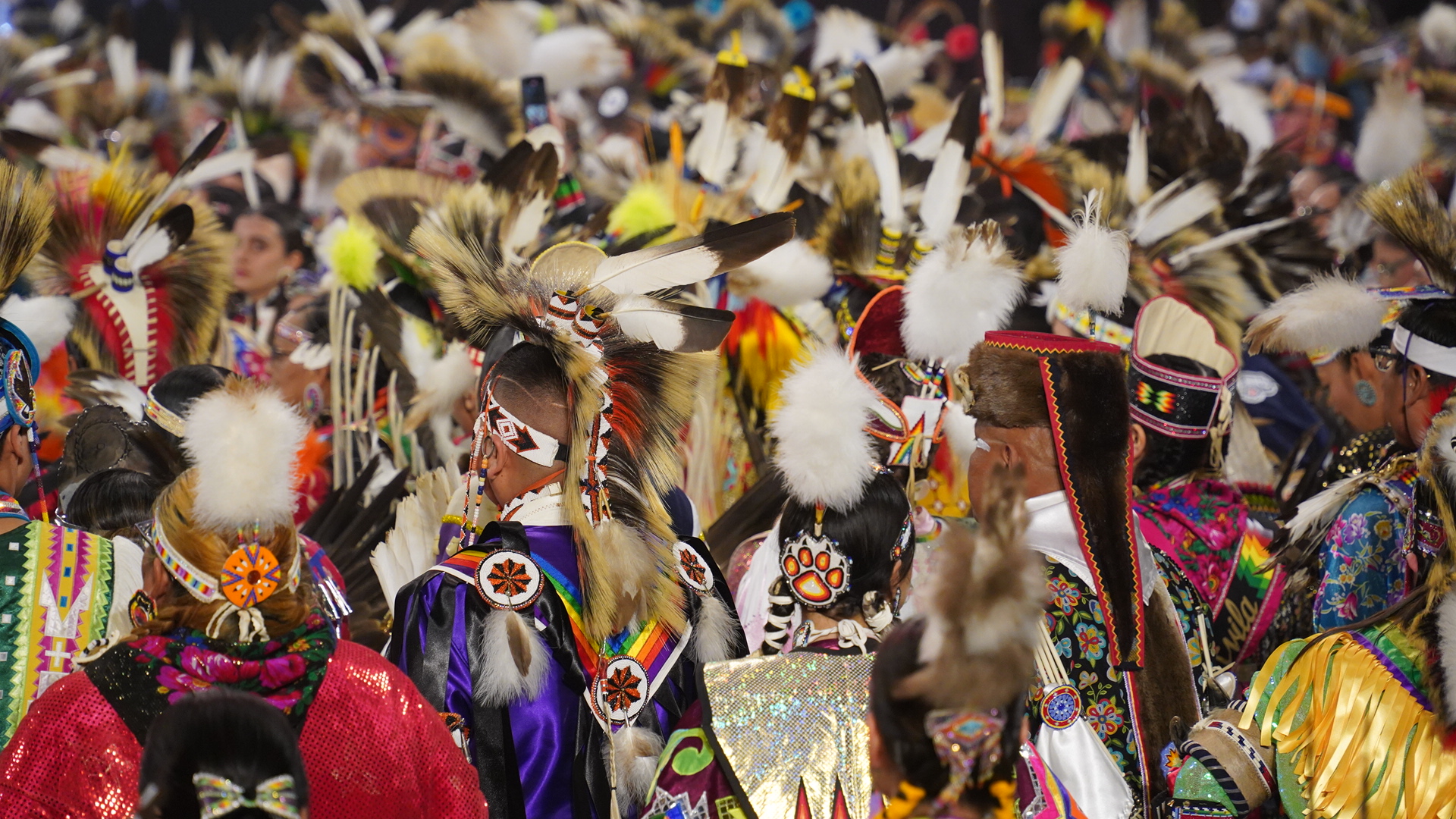
- Details
- By Kaili Berg
The Gathering of Nations, the largest powwow in North America, kicks off on Friday, April 25, at 12 noon in Albuqueque, New Mexico.
Now in its 42nd year, the Gathering of Nations brings together more than 750 Indigenous nations from across the continent for a weekend of dancing, singing, art, and community. Some 3,000 Native American dancers and thousands of others will fill the stands.
The weekend kicks off Thursday night with the Miss Indian World Traditional Talent Presentations at the Albuquerque Convention Center. Contestants are judged on their cultural knowledge, public speaking, and traditional talents.
Friday and Saturday, the main event takes over Expo New Mexico at Tingley Coliseum. Grand Entry, where dancers enter the arena in full regalia, happens twice each day, at noon and in the evening.
Between those sessions, visitors can walk the Indian Traders Market, listen to live music at Stage 49, grab food from Native-owned vendors, and watch dance contests in every category and age group.
There’s also a Horse & Rider Regalia Parade both days, honoring the relationship between Native people and horses.
Special contests are planned, including events for children with disabilities, a memorial dance for the late James Reed, and a Tiny Tots showcase for the youngest dancers.
The festival will wrap up Saturday night with the crowning of the new Miss Indian World, a young woman who will spend the next year traveling as a cultural ambassador for Native communities.
The Gathering of Nations Powwow will begin on Friday, April 25 and last until Satturday night, April 26. Tickets are $25 for a day pass or $45 for a two-day wristband. Reserved seating is available for $65 to $85. Parking costs $20 a day, with options for in-and-out access or full weekend passes. Kids under 2 get in free if they sit on a lap.
More Stories Like This
Native News Weekly (August 25, 2024): D.C. BriefsUS Presidents in Their Own Words Concerning American Indians
Indigenous Actor Elaine Miles Reports Detention by Alleged ICE Agents
Happy Thanksgiving from Native News Online
Coming Up on Native Bidaské: Behind the Animation: Joey Clift Talks “Pow” and Native Storytelling
Help us tell the stories that could save Native languages and food traditions
At a critical moment for Indian Country, Native News Online is embarking on our most ambitious reporting project yet: "Cultivating Culture," a three-year investigation into two forces shaping Native community survival—food sovereignty and language revitalization.
The devastating impact of COVID-19 accelerated the loss of Native elders and with them, irreplaceable cultural knowledge. Yet across tribal communities, innovative leaders are fighting back, reclaiming traditional food systems and breathing new life into Native languages. These aren't just cultural preservation efforts—they're powerful pathways to community health, healing, and resilience.
Our dedicated reporting team will spend three years documenting these stories through on-the-ground reporting in 18 tribal communities, producing over 200 in-depth stories, 18 podcast episodes, and multimedia content that amplifies Indigenous voices. We'll show policymakers, funders, and allies how cultural restoration directly impacts physical and mental wellness while celebrating successful models of sovereignty and self-determination.
This isn't corporate media parachuting into Indian Country for a quick story. This is sustained, relationship-based journalism by Native reporters who understand these communities. It's "Warrior Journalism"—fearless reporting that serves the 5.5 million readers who depend on us for news that mainstream media often ignores.
We need your help right now. While we've secured partial funding, we're still $450,000 short of our three-year budget. Our immediate goal is $25,000 this month to keep this critical work moving forward—funding reporter salaries, travel to remote communities, photography, and the deep reporting these stories deserve.
Every dollar directly supports Indigenous journalists telling Indigenous stories. Whether it's $5 or $50, your contribution ensures these vital narratives of resilience, innovation, and hope don't disappear into silence.
 The stakes couldn't be higher. Native languages are being lost at an alarming rate. Food insecurity plagues many tribal communities. But solutions are emerging, and these stories need to be told.
The stakes couldn't be higher. Native languages are being lost at an alarming rate. Food insecurity plagues many tribal communities. But solutions are emerging, and these stories need to be told.
Support independent Native journalism. Fund the stories that matter.
Levi Rickert (Potawatomi), Editor & Publisher

